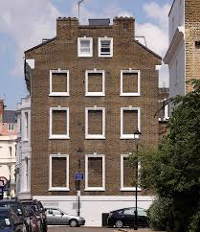|
Why Is It That Homeowners Covered Up Their Windows? England and Wales introduced a windows tax in 1696. The idea was that each house would be taxed according to the number of windows–the more windows, the higher the tax. The ruler at that time was William III. The tax was William's idea, in part because the aversion to an income tax was so strong. The government revenues were a bit thin at that time, and the king decided to institute a tax on windows. As it was laid out, the tax was a flat rate of 2 shillings for each and 4 more shillings on each house that had 10 to 20 windows, with houses having more than 20 windows having to pay 8 shillings. So it wasn't a per-window tax, per se. 
The tax was envisioned as a progressive tax: the more windows, the higher tax. However, the number of windows in a home didn't necessarily correspond to the size of the home. Many London families were having to pay up to 50 percent of their rent again, to pay the window tax. Not surprisingly, landlords raised rents to cover the new cost. Scotland became part of the picture in 1709, resulting in the tax on windows being extended to Scotland. The government took the opportunity to create a new tax bracket: houses having 30 more windows would have to pay 20 shillings. The trouble with the tax, as those who had to pay it saw it, was that it wasn't the same. Rates kept rising, thanks to a change to a variable tax in 1778. Prime Minister William Pitt the Younger in 1784 raised the windows tax rate to offset a decrease in taxes on tea. Three years later, Pitt's government tripled the window tax in order to pay for the country's wars against Napoleonic France. Another problem, according to taxpayers, was that the government kept changing the definition of a window. The language in the law was vague, and the government declared small holes in the wall and even some grates in basements as being windows, for the purposes of being taxed. In one particularly striking form of protest, many people bricked up, boarded up, or otherwise covered up their windows. The English government in 1747 passed a law to prevent such measures, imposing a fine on people who did such things. Another form of protest was that new homes were being built with markedly fewer windows. The Window Tax was repealed in 1851, long after studies first showed that a lack of windows in living spaces (meaning less light and less ventilation) led to a decline in people's health. Have a suggestion for this feature? Email Dave. |
Social Studies for Kids |





